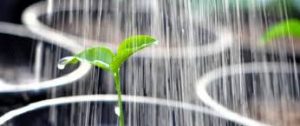Rethinking Garbage
Tuesday, February 25th, 2014With Spring (hopefully!) around the corner, here are some tips from the National Association of Green Agents and Brokers to follow when you start your spring cleaning!

The skies might be bluer, the water more clean, the air much purer and our plant life more green if we could only minimize the heaps of household garbage we produce.
It’s been a long time since we talked about garbage. It’s not a particularly appealing or sexy topic, that’s for sure, but it is a blight on our lives that we must continue to tackle. Canadians throw out nearly 1,700 pounds – much more than other countries of the same size and means — of waste per person each year. That’s the weight of eight adult men. When you picture eight guys heaped in a pile at the foot of your driveway it drives home the message more clearly and much more dramatically.
Let’s pay more attention to the three Rs – reduce, reuse and recycle, and hopefully we can work toward bringing our numbers down.
For starters, we need to rethink what we purchase and what we dispose of. Does it really pay to purchase products that come packaged in ridiculous quantities of plastic, foil and cardboard? Choose products that use minimal packaging or packaging that can be reused or recycled. Try to buy unpackaged goods in bulk.
Certain hardware items can be bought this way and that cuts your packaging waste. It’s better to buy one large jar of peanut butter than two small jars so keep that in mind when writing out your grocery list. And finally, don’t be afraid to voice your opinion about over packaging by complaining to the manufacturer or the retailer.
Start by reducing the stuff you buy, not just the quantity but the kinds of things you buy. Consider buying quality products that tend to last longer rather than cheap items that are more easily tossed out. Think twice before purchasing disposable items such as cups, diapers and lighters. What price does our environment pay for the throwaway items we buy? Think of reusable facsimiles. They’re out there.
Try not to use shopping as therapy or as a pastime. While this can be very difficult in our brand-driven, consumer society, the less time you spend in stores, the less junk you’ll accumulate. Try to buy only what you need. Make a list and follow it and try your hardest not to deviate from it.
Try to simplify your life. When was the last time you used that foot massager or hands-free hair dryer? The avocado slicer and talking cookie jar haven’t been used in years so pack them up and give them away. If you don’t use it, don’t need it or don’t absolutely love it, toss it out. If there is a sentimental attachment to something know that you always have your memories.
Reusing household items is what our grandmothers did. Well, guess what? The trend is back in fashion but not as much out of economic need. It has to do with green concerns of a different kind — saving resources, preventing pollution and using less energy.
Pass along magazines and books to friends and neighbours or donate them to women’s shelters, doctor’s offices or nursing homes. Perhaps your local thrift store will take them off your hands? Eyeglasses can be donated to Operation Eyesight Universal.
Don’t forget pre-schools and daycare centres. They’re often looking for simple household items such as egg cartons, buttons and toilet paper rolls that their mini Picassos can transform into masterpieces. Become the resident expert on recycling and where to dispose of odd items such as electronics, cell phones, dentures and old trophies. (Yes, there is a heaven for just about all earthly things).
Don’t forget the beauty of yard and garage sales. You can recycle a lot of items and makes a few quarters while you’re at it. For an online version of a yard sale check out Kijiji, a website that lets you donate or sell items for free. Freecycle.org also allows you to post items you’d like to get rid of.
Our pursuit of stuff often means we burn through too much waste in our quest to amass. Learn to be happy with less and you’ll be giving and getting so much more.
The National Association of Green Agents and Brokers (NAGAB) provide a Greenbroker and Greenagent certification program to Realtors across Canada. To get more information or to sign up for a course, visit www.nagab.org. Elden Freeman M.E.S., AGB, broker is the founder and executive director of the non-profit organization. 1-877-524-9494 Email elden@nagab.org.






